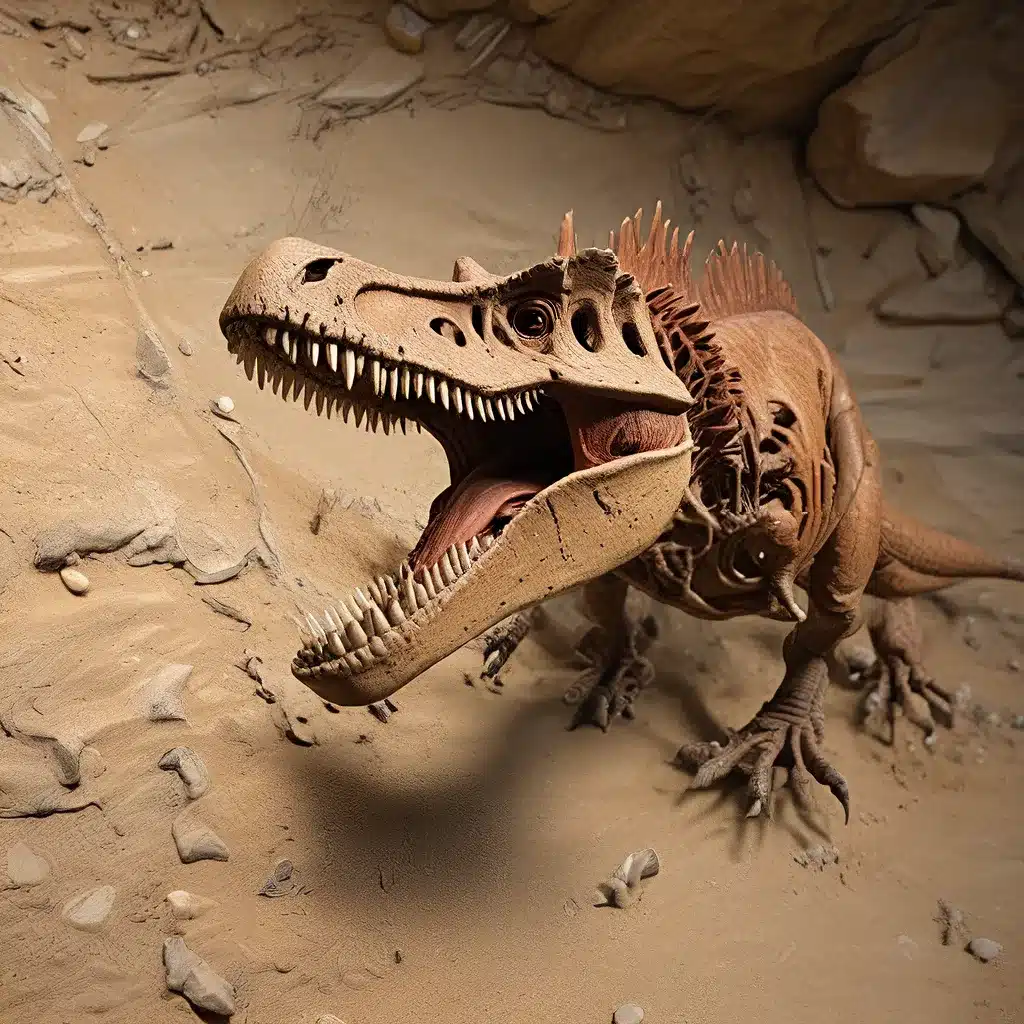
The world of paleontology is a treasure trove of ancient mysteries, and few places on Earth hold as many tantalizing clues as the fossil-rich regions of Colombia. From the Paja Formation near the picturesque town of Villa de Leyva to the Cerrejón Formation in the north, this South American nation has emerged as a veritable hotspot for groundbreaking discoveries that are rewriting our understanding of the Cretaceous period and the extraordinary creatures that roamed the planet millions of years ago.
Unveiling the Secrets of the Paja Formation
The town of Villa de Leyva, nestled in the eastern branch of the Andes Mountains, is a treasure trove of ancient marine fossils. During the Lower Cretaceous, between 100 and 145 million years ago, this region was submerged beneath a shallow, proto-Caribbean Sea, teeming with a diverse array of aquatic life. The fossils found here, embedded in the walls, floors, and roads of the town, offer a glimpse into this long-lost world.
One of the most remarkable finds in the Paja Formation was the discovery of a 32-foot-long short-necked pliosaur in 1977 by a local farmer. This fearsome marine predator, now known as Monquirasaurus Kronosaurus boyacensis, quickly became a national sensation, leading to the construction of a museum dedicated to housing and studying this impressive specimen.
But the Paja Formation has yielded far more than just the pliosaur. In 2015, Mary Luz Parra Ruge, the director of the Paleontological Research Center in Villa de Leyva, uncovered the fossil of a 125-million-year-old marine turtle, Desmatochelys padillai, one of the oldest of its kind discovered to date. And in 2018, María Páramo, a leading Colombian paleontologist, led a team that found and described another 32-foot-long pliosaur, Sachicasaurus vitae, named after the nearby town of Sáchica.
These remarkable finds have shed light on the diverse marine ecosystem that once thrived in this region, with ammonites, fishes, and even enormous plesiosaurs and aquatic reptiles like the 16-foot-long Kyhytysuka sachicarum with its swordlike skull and sharp teeth, all coexisting in the tropical Cretaceous oceans.
Exploring the Cerrejón Formation and Beyond
While the Paja Formation has captured the world’s attention, Colombia’s Cerrejón Formation in the north has also yielded incredible fossils, including the remains of the Titanoboa cerrejonensis, a gigantic snake that measured more than 32 feet in length and slithered the earth some 60 million years ago.
But the country’s paleontological riches don’t end there. The Tatacoa Desert is home to a wealth of Cretaceous turtle fossils, some of which were the size of a compact car. And according to Héctor Daniel Palma-Castro, a master’s student at the National University of Colombia, there are likely many more fossil-rich regions yet to be discovered across the country.
Challenges and Opportunities in Colombian Paleontology
Despite the abundance of fossils in Colombia, the field of paleontology in the country has faced significant challenges. Colombian universities do not offer undergraduate paleontology degrees, forcing many aspiring paleontologists, like Dirley Cortés, to leave the country to pursue their studies at the postgraduate level.
Furthermore, the country’s turbulent history, with confrontations between the government, left-wing guerrillas, right-wing paramilitary groups, and drug cartels, has limited the ability of scientists to explore and study certain regions. The 2016 peace accord between the government and the FARC (the Revolutionary Armed Forces of Colombia) offered hope for increased access, but a recent resurgence of violence has once again closed off many areas to researchers.
Another obstacle is the lack of research funding and technological tools necessary for advanced paleontological studies. The Colombian government’s investment in science has been dismal, with the national science budget facing an 18 percent reduction last year. This has forced many Colombian paleontologists to seek opportunities and resources abroad, often continuing their fieldwork in their home country while employed by institutions in Europe or North America.
However, there are signs of progress. Small research groups in Colombia are slowly developing the field of paleontology, tackling different branches of knowledge and educating new generations of students. Additionally, initiatives like the Guardians of Paleontology program at the Paleontological Research Center in Villa de Leyva are inspiring young Colombians to explore their country’s ancient past.
The Promise of Future Discoveries
As the number of researchers studying Colombia’s ancient ecosystems continues to grow, there is a palpable sense of optimism for the future of paleontology in the country. New locations will be explored, and many more unknown species are waiting to be found, according to Héctor Daniel Palma-Castro.
The fossils of the Paja Formation, Cerrejón Formation, and Tatacoa Desert have already captivated the world, but the true extent of Colombia’s paleontological riches remains to be fully uncovered. With increased funding, access to advanced technology, and a new generation of passionate researchers, the country is poised to make even more groundbreaking discoveries that could transform our understanding of the Cretaceous period and the prehistoric life that thrived in this remarkable corner of the world.
As The Lost Kingdoms continues to explore the fascinating world of ancient civilizations and their lasting legacies, the ongoing paleontological work in Colombia serves as a powerful reminder of the incredible secrets that still lie buried, waiting to be unearthed and shared with the world.


